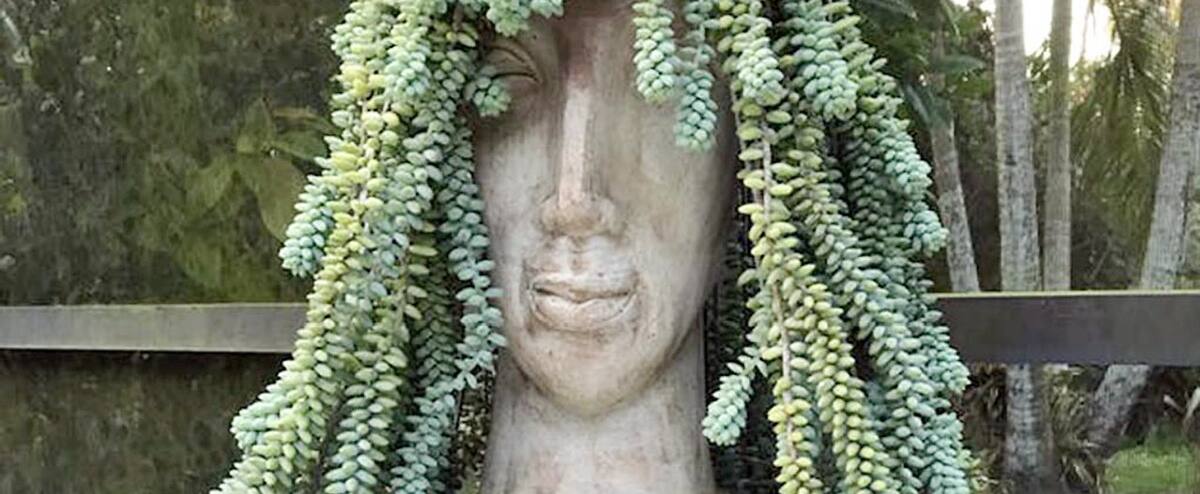Cacti and succulents are hardy plants that are very easy to grow. In addition to being very decorative, some are edible. Whether you grow them in containers on your terrace, in a flower bed or in your vegetable garden, these plants will add exoticism to your garden and your plate this summer!
Very undemanding, cacti and succulents can be grown outdoors, in the ground or in containers. If care is taken to provide them with well-drained sphagnum peat-based soil, the majority of these plants can withstand intense sunshine and heat as well as long periods of drought.
However, the cactus and edible succulents featured in this column cannot survive our winters, so they must be brought into the house once fall arrives. Indoors, these plants require only one watering per month. You can also simply consider them as annuals and put them in the compost once they have suffered the first fall frosts.
Here is a cactus and five edible succulents to grow on your patio or in your garden this summer.
Corded Aptenia
Photo from gardenia.net
This plant native to South Africa has edible creeping foliage. Used as a ground cover in flower beds or as a companion plant in flower boxes, this very drought-tolerant succulent produces small fuchsia-pink flowers all summer long.
The dark green foliage of Aptenia cordata has a tangy taste and a crunchy texture that works wonders in salads. There is also a pretty cultivar of Aptenia cordate with green foliage variegated with white.
Aloe
Photo provided by Albert Mondor
Aloe is a completely edible medicinal succulent plant. The sap of this plant is known to accelerate the healing of wounds, burns, insect bites and sunburn. You can also concoct a smoothie from aloe leaves to soothe the intestines abused by excess food and alcohol. However, it should not be abused too much since, in high doses, aloe has laxative properties.
Cuban oregano
Photo provided by Jardins du Senegal
Although it is called Cuban oregano (named Plectranthus amboinicus in Latin), this plant closely related to coleus is rather native to Africa. It is used in traditional medicine to treat coughs and certain other respiratory problems. Finely chopped, its very aromatic leaves are added to lamb and poultry dishes. This succulent plant is very easy to grow both in pots and in the ground.
purslane
Photo courtesy of Wild Flowers Provence
The garden purslane, also called wild purslane or sometimes porcelane, produces small yellow flowers which have the particularity of opening when the sun is out and closing in cloudy weather. Although it can sometimes be grown (from seed), this creeping succulent usually grows spontaneously in gardens, like dandelion and plantain. Eaten in salads, the thick leaves of purslane have a slightly lemony flavor and produce a mucilaginous substance which gives a pleasant texture and a refreshing flavor to the dishes it accompanies.
Prickly pear
Photo taken from quandarrosermaplante.com
The prickly pear is a cactus whose stems and fruits are completely edible. Raw, its stems, which look like rackets, are an excellent ingredient for making salsa. You can also cook them on the BBQ and garnish hamburgers. A word of warning: you must select a prickly pear cultivar without needles and take care to remove the areoles – kinds of small whitish bumps found on the rackets – before eating the stems of this cactus. The fruits of the prickly pear are also edible, but are very rarely produced in our climate.
Morgan stonecrop
Photo courtesy of Mountain Crest Gardens
Morgan’s stonecrop, also called Morgan’s sedum, is a succulent plant with dense bluish-green foliage arranged in compact masses along its drooping stems. Like all sedums, Morgan’s stonecrop likes full sun, but it also does very well in partial shade. This plant appreciates that the soil in which it grows dries out well before being watered again. The small leaves of this stonecrop have a delicious tangy and slightly peppery flavor.






